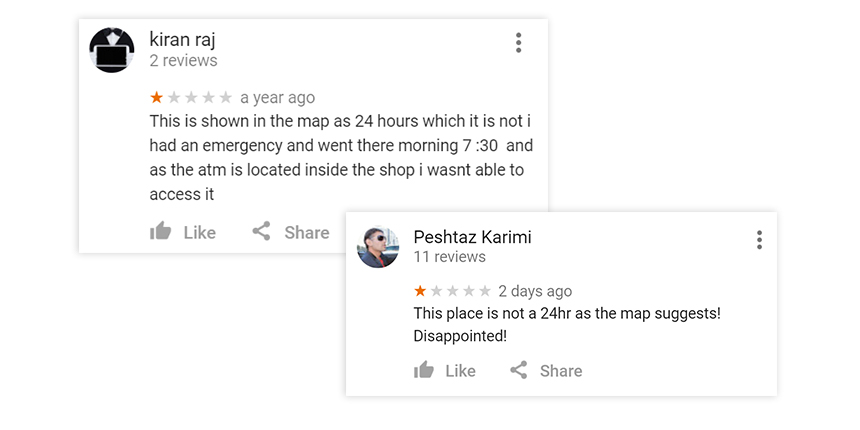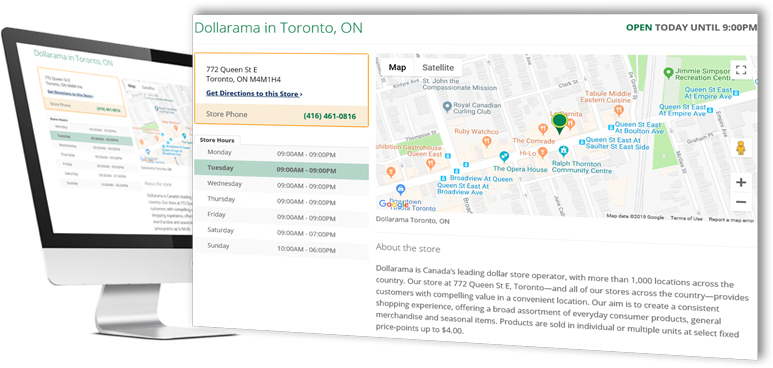In our recent post about the STORE18 conference, we referenced Google’s Eric Morris and his idea that “proximity is key to closing the customer”. Of course, if being physically close was all there was to it, a lot of agencies would be out of luck (and out of business!).
Instead, “near me” searches are now, more than ever, being regarded as a strong signal of purchase intent, and what used to be a format solely for location-focused searches queries has slowly evolved to become a product search technique. It’s one of the main reasons local has become the search industry’s hottest topic.
Just think about all the factors that go into being the face of “pizza near me” or “LED TV sale near me”. The complexity of it all unfolds until it encompasses everything from content strategy to review management, map channel listings, SEO, paid search, and local landing pages. It’s essentially everything under the sun related to your digital footprint.
The delicate business of trust
If you want to cover all your bases and broadcast your brand wherever it needs to be, it’s important to take a step back and ensure that you’ve built a strong foundation of clean and accurate data.
Time and time again, we encounter online listings with either missing hours or, worse, inaccurate hours. You’ve experienced it too, haven’t you? You’re on your way to that store at 6 p.m. because the maps listing says it closes at 8 p.m.—but you arrive to find out that it’s actually been closed since 5 p.m. What usually follows for the business is an dissatisfied customer and even a negative review.

Research has shown that an overwhelming 80% of internet users in the US would lose trust in a local business for having incorrect or inconsistent details and business names online, with over 50% of users losing trust for reasons including incorrect business name, opening hours, and poor quality or out-of-date photos.
Four ways to win at local
With such strong correlations between digital inaccuracies and customer trust, it’s important to understand how the minutiae of your business details can compound to heavily impact your customer experience. With that in mind, here are four things to consider when laying out a solid hyperlocal strategy.
-
Respond to your reviews
Aside from having a tangible improvement on your local search visibility, responding to reviews—whether positive or negative—helps build your brand reputation and show potential customers that you care about their opinion. A Harvard Business Review study on TripAdvisor concluded that a hotel responding to reviews can expect a 12% increase in reviews, with an increase in star rating by an average of 0.12 stars. This may not seem significant, but remember that TripAdvisor rounds average ratings to the nearest half star, so it could be the difference between a 4 and 4.5-star rating.
-
Localise your pages
Creating local pages for every location under your brand helps provide a personalised customer experience and helps drive content that can impact your organic search listings. Studies reveal that the geographic keyword relevance of domain content ranked in the top six out of 50 local organic factors, with Link Signals (including linking domain quality) accounting for a 27.94% majority of localised organic ranking factors.

-
Understand your customer journey
Get to know how your customers interact with your brand. What are they searching? Where are they searching from? Following your customers across their journey of Thinking, Planning, Doing is a great way to understand how to grab their attention from a local perspective.
-
Consistency is key
Ensuring data integrity means not being satisfied until every last location has accurate data and every review is responded to. Consistency and accuracy will make your life (and your customers’) a whole lot easier.
There’s no doubt that local is a fiercely competitive space, but you can reap incredible benefits when you get it right—even if you only start with fundamentals. So don’t neglect your local strategy when there’s so much at stake: we’re ready to help you realise your brand’s hyperlocal potential and drive transformative growth across your locations. Get in touch with DAC!




